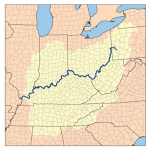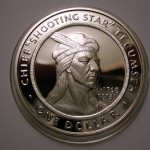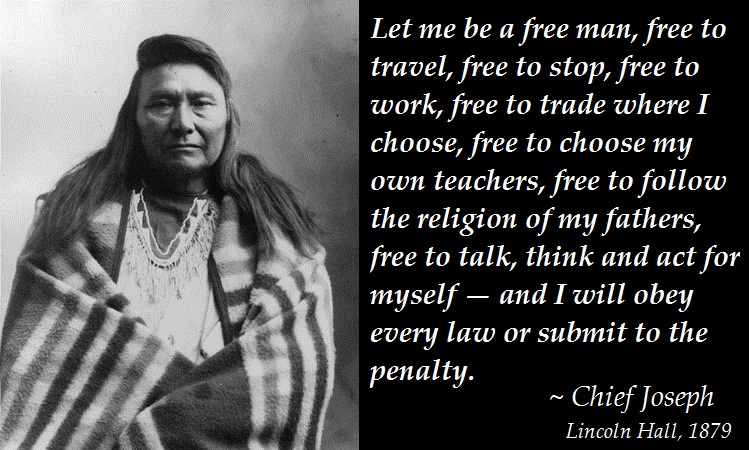
 In March, 1768, during a period when astronomers an ocean away were observing and assigning numerical relationships to celestial and planetary patterns, an enormous meteor flashed across the night sky over what is now northern Ohio.
In March, 1768, during a period when astronomers an ocean away were observing and assigning numerical relationships to celestial and planetary patterns, an enormous meteor flashed across the night sky over what is now northern Ohio.The Shawnee people named it “The Panther,” and a minor Shawnee chief, Pucksinwah, took it as a sign that his newborn son was destined for greatness.
Shawnee tradition held that within ten days of a boy’s birth, an event would occur, an unsoma, which would signify what their God, Moneto, wished the child to be called. That such a significant event had occurred exactly at the time of the child’s birth was of highest meaning. Pucksinwah named the infant Tecumseh, (“Shooting Star”, or “The Panther Passing Across” or “Panther Across the Sky.”)

http://aboutnativeamericans.blogspot.com/2012/02/about-iroquois-six-nations.html
http://indianspictures.blogspot.com/p/iroquois-indian-pictures-and-images_16.html
In the same year, the Six (Iroquois) Nations signed the Treaty of Fort Stanwix with the English at a site in what is now upstate New York. The treaty was an attempt to eliminate frontier violence against European settlers by redistricting boundary lines agreed to five years previously.
 The
Iroquois hoped the treaty would contain British colonial expansion by
ceding claims south of the Ohio River and roughly east of the northern
Appalachian range. However, the Shawnee and other clans who were the
primary inhabitants of these areas were not represented at the
negotiations.
The
Iroquois hoped the treaty would contain British colonial expansion by
ceding claims south of the Ohio River and roughly east of the northern
Appalachian range. However, the Shawnee and other clans who were the
primary inhabitants of these areas were not represented at the
negotiations.
Horatio Hale.—Explorer, linguist, ethnologist. One of the earliest prominent American ethnologists. Among his important works is The Iroquois Book of Rites.
“Brother,
listen to what we say. There was a time when our forefathers owned this
great island. Their seats extended from the rising to the setting sun.
The Great Spirit had made it for the use of Indians. He had created the
buffalo, the deer, and other animals, for food. He made the bear and the
beaver, and their skins served us for clothing. He had scattered them
over the country, and taught us how to take them. He had caused the
earth to produce corn for bread. All this he had done for his red
children because he loved them. If we had any disputes about hunting
grounds, they were generally settled without the shedding of much blood,
but an evil day came upon us; your forefathers crossed the great water,
and landed on this island. Their numbers were small; they found friends
and not enemies; they told us they had fled from their country for fear
of wicked men, and came here to enjoy their religion. They asked for a
small seat; we took pity on them, granted their request, and they sat
down among us; we gave them corn and meal; they gave us poison [whiskey]
in return. The white people had now found our country; tidings were
carried back, and more came amongst us, yet we did not fear them; we
took them to be friends; they called us brothers; we believed them, and
gave them a larger seat. At length their numbers had greatly increased;
they wanted more land; they wanted our country. Our eyes were opened,
and our minds became uneasy. Wars took place; Indians were hired to
fight against Indians, and many of our people were destroyed. They also
brought strong liquors among us; it was strong and powerful, and has
slain thousands.
“Brother,
our seats were once large, and yours were very small; you have now
become a great people, and we have scarcely a place left to spread our
blankets; you have got our country, but are not satisfied; you want to
force your religion upon us.”
http://www.biography.com/people/sitting-bull-9485326"... Arguably the most powerful and perhaps famous of all Native American chiefs, Sitting Bull was born in 1831 in what is now called South Dakota.
The son of an esteemed Sioux warrior named Returns-Again, Sitting Bull looked up to his father and desired to follow in his footsteps, but didn't show a particular talent for warfare. As a result he was called "Slow" for his apparent lack of skills.
At the age of 10, however, he killed his first buffalo. Four years later, he fought honorably in a battle against a rival clan. He was named Tatanka-Iyotanka, a Lakota name that describes a buffalo bull sitting on its haunches.
In June 1876, just a few days later, the chief led a successful battle against American forces in the Battle of the Rosebud. A week later he was engaged in battle again, this time against General George Armstrong Custer in the now famous Battle at Little Bighorn. There, Sitting Bull led thousands of Sioux and Cheyenne warriors against Custer's undermanned force, wiping out the American general and his 200-plus men.
For the U.S. government the defeat was an embarrassment, and the Army doubled down its efforts to wrest control of the territory from Native American tribes.






No comments:
Post a Comment